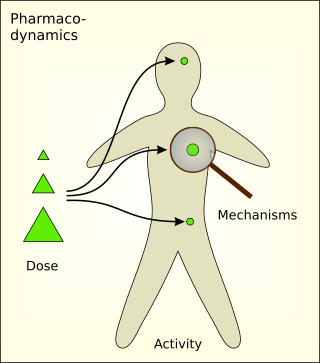
Onomatopoeia is a type of word, or the process of creating a word, that phonetically imitates, resembles, or suggests the sound that it describes. Common onomatopoeias include animal noises such as oink, meow, roar, and chirp. Onomatopoeia can differ by language: it conforms to some extent to the broader linguistic system. Hence, the sound of a clock may be expressed variously across languages: thus as tick tock in English, tic tac in Spanish and Italian, dī dā in Mandarin, kachi kachi in Japanese, or tik-tik in Hindi and Bengali.
Genre is any style or form of communication in any mode with socially-agreed-upon conventions developed over time. In popular usage, it normally describes a category of literature, music, or other forms of art or entertainment, based on some set of stylistic criteria Often, works fit into multiple genres by way of borrowing and recombining these conventions. Stand-alone texts, works, or pieces of communication may have individual styles, but genres are amalgams of these texts based on agreed-upon or socially inferred conventions. Some genres may have rigid, strictly adhered-to guidelines, while others may show great flexibility.
A biocide is defined in the European legislation as a chemical substance or microorganism intended to destroy, deter, render harmless, or exert a controlling effect on any harmful organism. The US Environmental Protection Agency (EPA) uses a slightly different definition for biocides as "a diverse group of poisonous substances including preservatives, insecticides, disinfectants, and pesticides used for the control of organisms that are harmful to human or animal health or that cause damage to natural or manufactured products". When compared, the two definitions roughly imply the same, although the US EPA definition includes plant protection products and some veterinary medicines.

In evolutionary biology, mimicry is an evolved resemblance between an organism and another object, often an organism of another species. Mimicry may evolve between different species, or between individuals of the same species. Often, mimicry functions to protect a species from predators, making it an anti-predator adaptation. Mimicry evolves if a receiver perceives the similarity between a mimic and a model and as a result changes its behaviour in a way that provides a selective advantage to the mimic. The resemblances that evolve in mimicry can be visual, acoustic, chemical, tactile, or electric, or combinations of these sensory modalities. Mimicry may be to the advantage of both organisms that share a resemblance, in which case it is a form of mutualism; or mimicry can be to the detriment of one, making it parasitic or competitive. The evolutionary convergence between groups is driven by the selective action of a signal-receiver or dupe. Birds, for example, use sight to identify palatable insects and butterflies, whilst avoiding the noxious ones. Over time, palatable insects may evolve to resemble noxious ones, making them mimics and the noxious ones models. In the case of mutualism, sometimes both groups are referred to as "co-mimics". It is often thought that models must be more abundant than mimics, but this is not so. Mimicry may involve numerous species; many harmless species such as hoverflies are Batesian mimics of strongly defended species such as wasps, while many such well-defended species form Müllerian mimicry rings, all resembling each other. Mimicry between prey species and their predators often involves three or more species.
Mimesis is a term used in literary criticism and philosophy that carries a wide range of meanings, including imitatio, imitation, nonsensuous similarity, receptivity, representation, mimicry, the act of expression, the act of resembling, and the presentation of the self.
Calorie restriction mimetics (CRM), also known as energy restriction mimetics, are a hypothetical class of dietary supplements or drug candidates that would, in principle, mimic the substantial anti-aging effects that calorie restriction (CR) has on many laboratory animals and humans. CR is defined as a reduction in calorie intake of 20% to 50% without incurring malnutrition or a reduction in essential nutrients. An effective CRM would alter the key metabolic pathways involved in the effects of CR itself, leading to preserved youthful health and longer lifespan without the need to reduce food intake. The term was coined by Lane, Ingram, Roth of the National Institute on Aging in a seminal 1998 paper in the Journal of Anti-Aging Medicine, the forerunner of Rejuvenation Research. A number of genes and pathways have been shown to be involved with the actions of CR in model organisms and these represent attractive targets for drug discovery and for developing CRM. However, no effective CRM have been identified to date.

Pharmacodynamics (PD) is the study of the biochemical and physiologic effects of drugs. The effects can include those manifested within animals, microorganisms, or combinations of organisms.

The Japanese language has a large inventory of sound symbolic or mimetic words, known in linguistics as ideophones. Such words are found in written as well as spoken Japanese. Known popularly as onomatopoeia, these words do not just imitate sounds but also cover a much wider range of meanings; indeed, many sound-symbolic words in Japanese are for things that make no noise originally, most clearly demonstrated by 'silently', not to be confused with the religion Shintō.
A mimic is any living species that has evolved to resemble another successful species.

Anatomy of Criticism: Four Essays is a book by Canadian literary critic and theorist Northrop Frye that attempts to formulate an overall view of the scope, theory, principles, and techniques of literary criticism derived exclusively from literature. Frye consciously omits all specific and practical criticism, instead offering classically inspired theories of modes, symbols, myths and genres, in what he termed "an interconnected group of suggestions." The literary approach proposed by Frye in Anatomy was highly influential in the decades before deconstructivist criticism and other expressions of postmodernism came to prominence in American academia circa 1980s.

Jacopo Mazzoni was an Italian philosopher, a professor in Pisa, and friend of Galileo Galilei. His first name is sometimes reported as "Giacomo".

René Noël Théophile Girard was a French polymath, historian, literary critic, and philosopher of social science whose work belongs to the tradition of philosophical anthropology. Girard was the author of nearly thirty books, with his writings spanning many academic domains. Although the reception of his work is different in each of these areas, there is a growing body of secondary literature on his work and his influence on disciplines such as literary criticism, critical theory, anthropology, theology, mythology, sociology, economics, cultural studies, and philosophy.
Dualism most commonly refers to:

Gerald Frank Else was a distinguished American classicist. He was professor of Greek and Latin at University of Michigan and University of Iowa. Else is substantially credited with the refinement of Aristotelian scholarship in aesthetics in the 20th century to expand the reading of catharsis alone to include the aesthetic triad of mimesis, hamartia, and catharsis as all essentially linked to each other.
Glycomimetic is a term used to refer to molecules that have structures similar to carbohydrates, but with some variation. This will normally result in modified biological properties.
Mimesis criticism is a method of interpreting texts in relation to their literary or cultural models. Mimesis, or imitation (imitatio), was a widely used rhetorical tool in antiquity up until the 18th century's romantic emphasis on originality. Mimesis criticism looks to identify intertextual relationships between two texts that go beyond simple echoes, allusions, citations, or redactions. The effects of imitation are usually manifested in the later text by means of distinct characterization, motifs, and/or plot structure.
The mimetic theory of desire, an explanation of human behavior and culture, originated with the French historian, literary critic, and philosopher of social science René Girard (1923–2015). The name of the theory derives from the philosophical concept mimesis, which carries a wide range of meanings. In mimetic theory, mimesis refers to human desire, which Girard thought was not linear but the product of a mimetic process in which people imitate models who endow objects with value. Girard called this phenomenon "mimetic desire", and described mimetic desire as the foundation of his theory:
"Man is the creature who does not know what to desire, and he turns to others in order to make up his mind. We desire what others desire because we imitate their desires."

An exercise mimetic is a drug that mimics some of the biological effects of physical exercise. Exercise is known to have an effect in preventing, treating, or ameliorating the effects of a variety of serious illnesses, including cancer, type 2 diabetes, cardiovascular disease, and psychiatric and neurological diseases such as Alzheimer's disease. As of 2021, no drug is known to have the same benefits.








